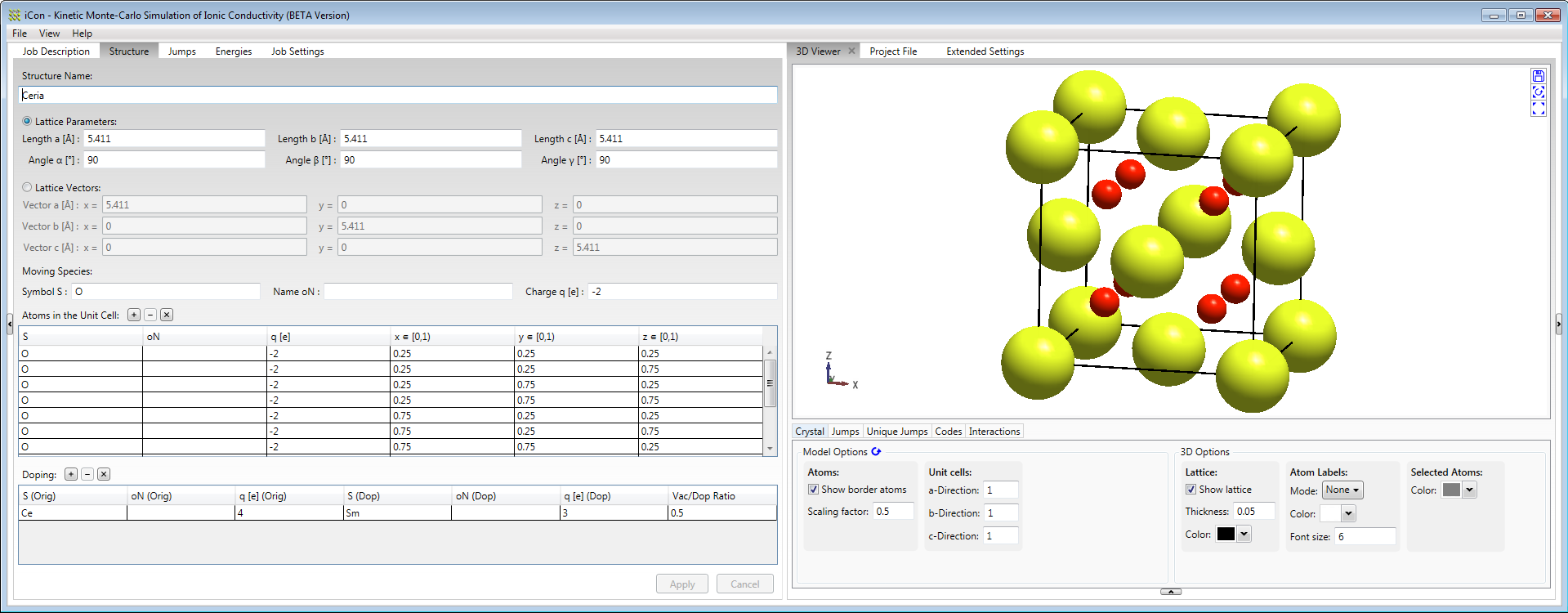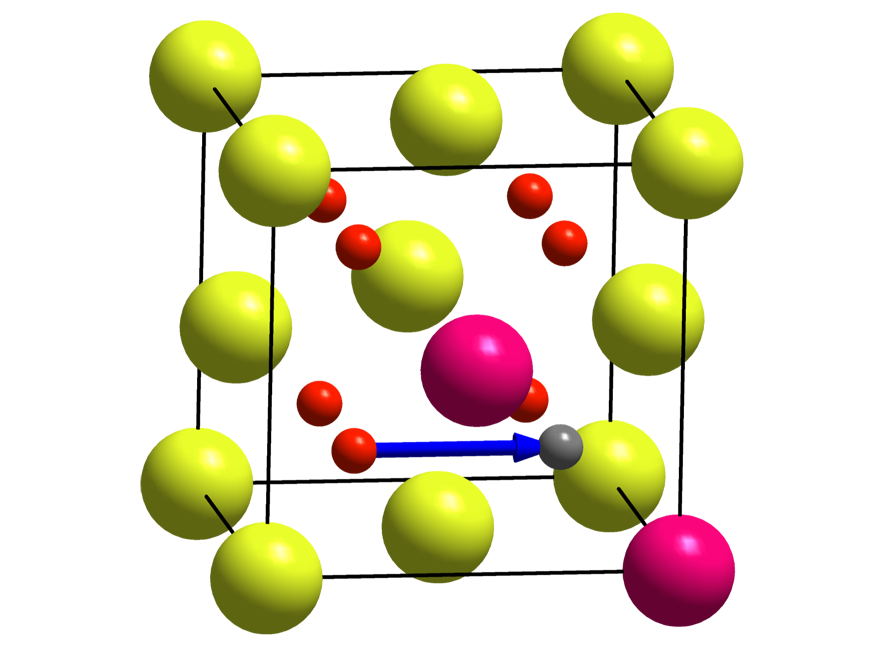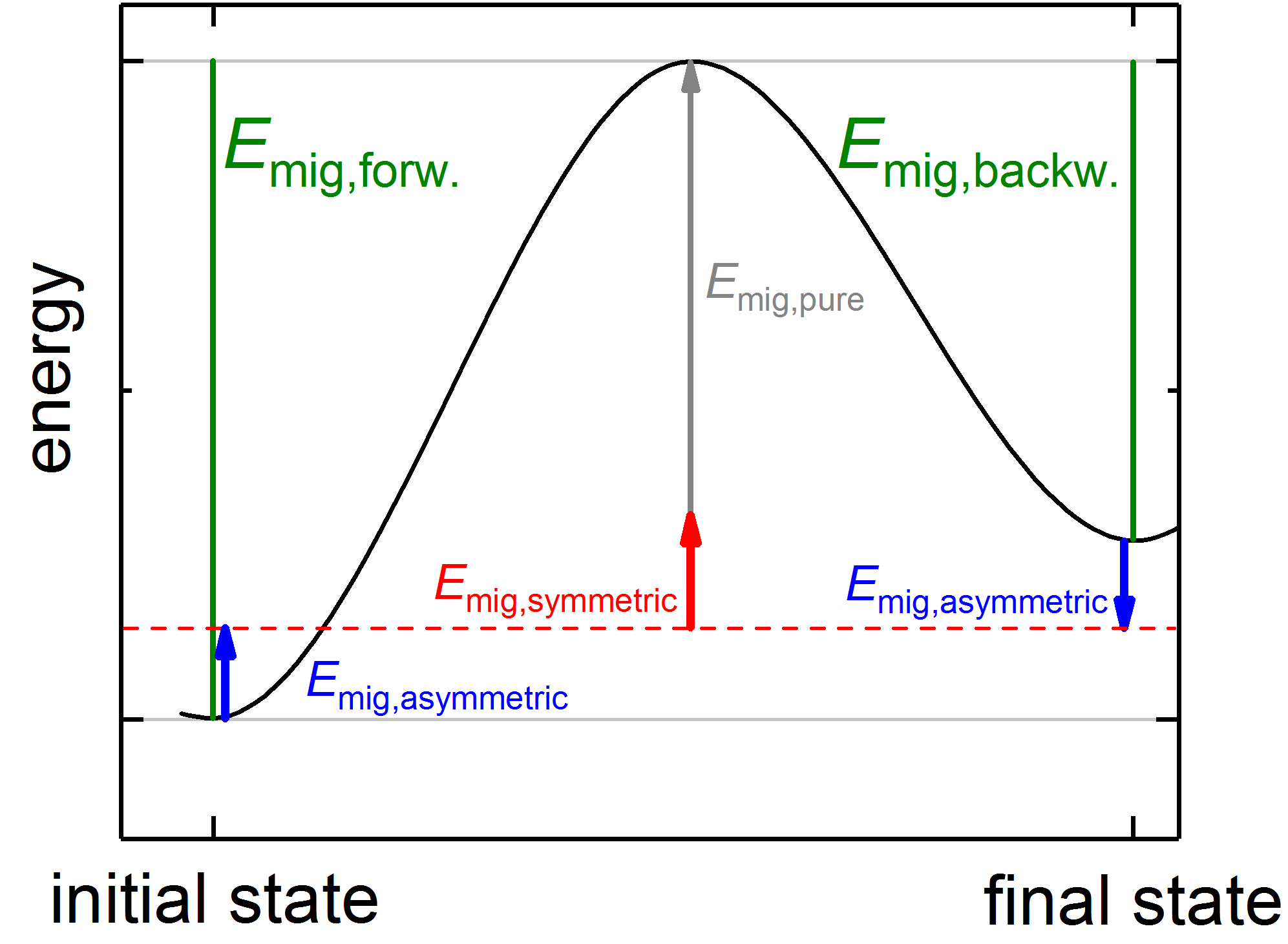Welcome to iCon, a universal Kinetic Monte Carlo program for crystalline materials.Using iCon, you can:
iCon was written by Philipp Hein and Benjamin Grope in the group of Prof. Manfred Martin at the Institute of Physical Chemistry, RWTH Aachen University.

The program offers a graphical user interface for Windows to provide intuitive and flexible consideration of defect interactions and the creation of simulations, without any programming knowledge. The modeling process is supported by a 3D representation of the crystal structure, the unique jumps, and the interaction environment.
Ionic conductivities and diffusion coefficients of solid state materials are crucial for the performance of various applications ranging from batteries and fuel cells to resistive switching devices. The macroscopic properties result directly from the microscopic energy landscape of ion motion. Lattice site energies and migration barriers depend on lattice defects such as vacancies and dopant ions in the local environment. The multiplicity of possible defect interactions with the migrating ion impedes the use of analytic models. Ab initio methods allow the calculation of the energy barrier for individual jumps, however, the simulation of the conductivity is not feasible due to their vast computational demand. Kinetic Monte Carlo simulations enable the simulation of the ionic conductivity based on ab initio data and thus bridge the gap between microscopic jump events and the macroscopic conductivity. iCon is designed to simulate the ionic conductivity and diffusion coefficient in any crystalline material by the Kinetic Monte Carlo algorithm.
iCon was successfully applied to simulate the ionic conductivity of various materials like doped ceria (see our Tutorial). For more information, see Publications.

Oxygen ion conduction in doped ceria follows a vacancy mechanism. The surrounding dopant ions and oxygen vacancies influence the migration energy and, therefore, the probability of a jump.

The migration energies of individual jumps are modeled by a combination of explicitly calculated energy barriers and additional pair interactions.

Conductivities are simulated for various dopants and dopant fractions. The dependence of the conductivity on the dopant and dopant fraction as well as the maximum for Sm-doped ceria can be clearly identified.
For further information and access to the program, please contact:
Prof. Dr. Manfred Martin Institute of Physical Chemistry RWTH Aachen University Landoltweg 2 52074 Aachen Germany
martin
What can iCon do?
What can iCon not do?